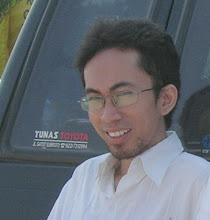Within the last three months, paintings styled on comics and animations, designs similar to street art and media in graphic art format, have suddenly been all the rage. Several key venues in Indonesia's art world, at least in Jakarta, such as those in Jl. Kemang Raya. Art Space in Jl. Hang Tuah, Galeri Nasional Indonesia (GNI) and some new places like Jakarta Art District (JAD) in Grand Indonesia Plaza are full of the works of young artists.
Through group exhibitions and with some going solo, it is as if they have an agreement to explore comic forms, street art or animamix art. There is a unique style presented in their works. Looking at their format, with most of the paintings or graphic works being on canvas, is of course a different matter. But it seems certain marketing strategies that absorb his style trend are more dominant. And don't forget, they create monoprint works individually. This will make collectors feel secure, there is no original master for printed works. So then, as we have so much choice in terms of art shows, it is only right that we choose the sytle that reminds us of conventional graphic art works which also shows the transformation into the contemporary theme and spirit evoked by the imaginations of young artists.
The medium of expression is monoprint and the promotor is Andi's Gallery. Most of participating artists have received awards for their graphic art works although they are mostly graduates from the fine art departments in their respective arts academies. On a daily basis, they work as print makers, graphic designers, sometimes creating comic books, or contributing to murals or graffiti, working in the cyber-animation world and participating in Graphic Triennale.
They exude the spirit of contemporary print makers, familiar with the digital and cyber media world while continuing to work on manual printing. This is why curators have to work hard to catagorize their works. Will they be labeled old/conventional or contemporary graphic art works?
Most of them, because they want to be labelled "conventional graphic arts", at least for the exhibition in Andi's Gallery, used hardboard cuts to print on canvas. The wood fibres are still expressive - not in the style of more refined and very detailed modern engravings - and they have reatined the hand colouring/painting. Some used the silk screen medium which reminds us of the pop art style of the seventies.
Animation-comic or illustrative style are found in the works of A.C Andre Tanama, Agus Yulianto, Ariswan Adhitama, Daniel Timbul Cahya Khrisna, Fransisco Panca Nugraha, Irwantho Lentho, Sigit Purnomo, and Teguh Hariyantha. Some of these artists use their canvases to depict scenes of conversing figures. The canvas becomes something like a single comic box whereas animation shapes appear in robot forms that bring to mind the anime-gamers digital world.
We can also find artists who are exploring monoprint graphic art in abstract forms. The canvas becomes a spread of colours and composition fields consisting of geometric of biomorphic shapes, like the works of A.T. Sitompul or Syaiful Aulia Garibaldi.
The only senior painter, Tisna Sanjaya makes an appearance with his woks using charcoal. Where does the term monoprint fit into Tisna's oeuvre? For the artist working on his arts doctorate in Yogyakarta Arts Institute (ISI), he uses his own body as printer by putting paint all over it and transfering the paint onto the canvas.
Although it is under the banner or monoprint, and is referred to as a graphic arts exhibition, the term animation-comic style is more appropriate for this show because these styles are indeed dominant. Will this distinctive feature via the medium of graphic art, with Indonesia comic-illustration-animation styles, really become a trend ?


















